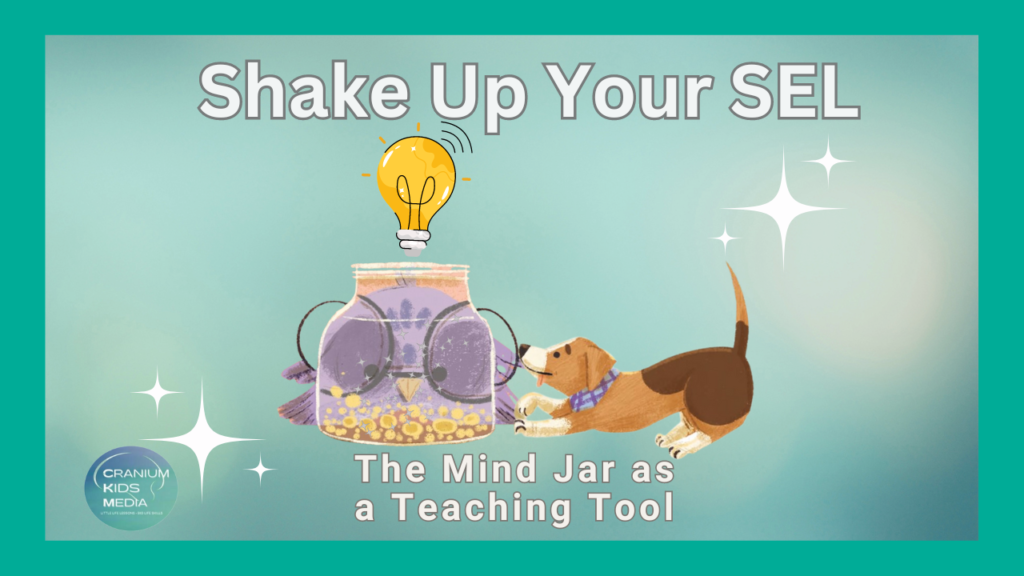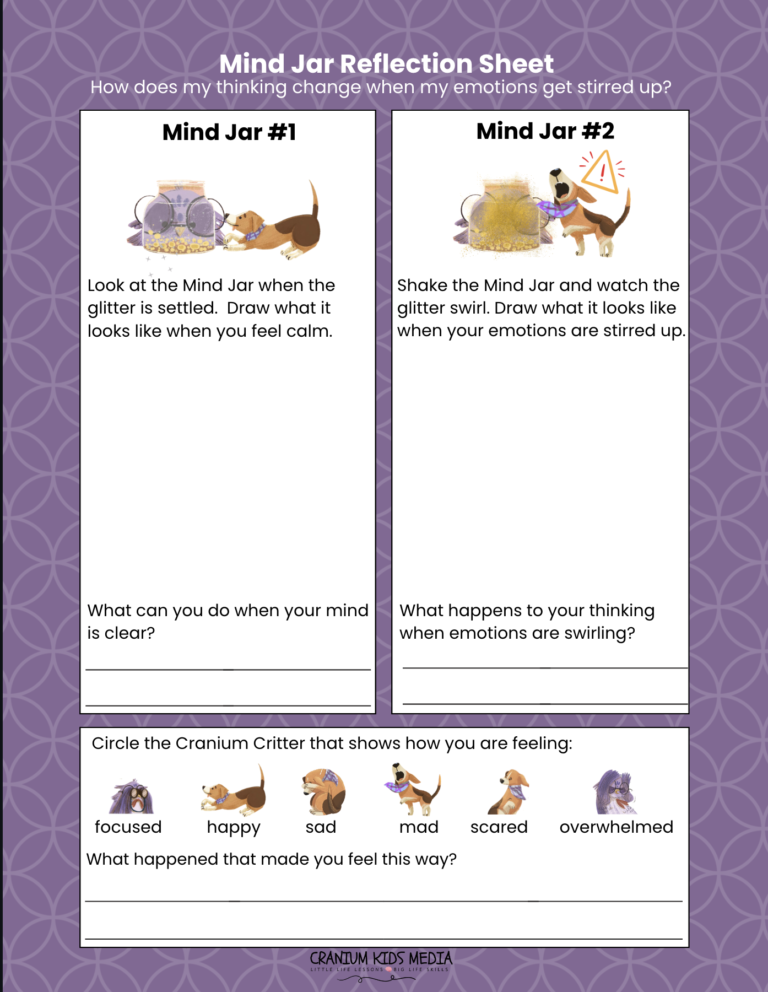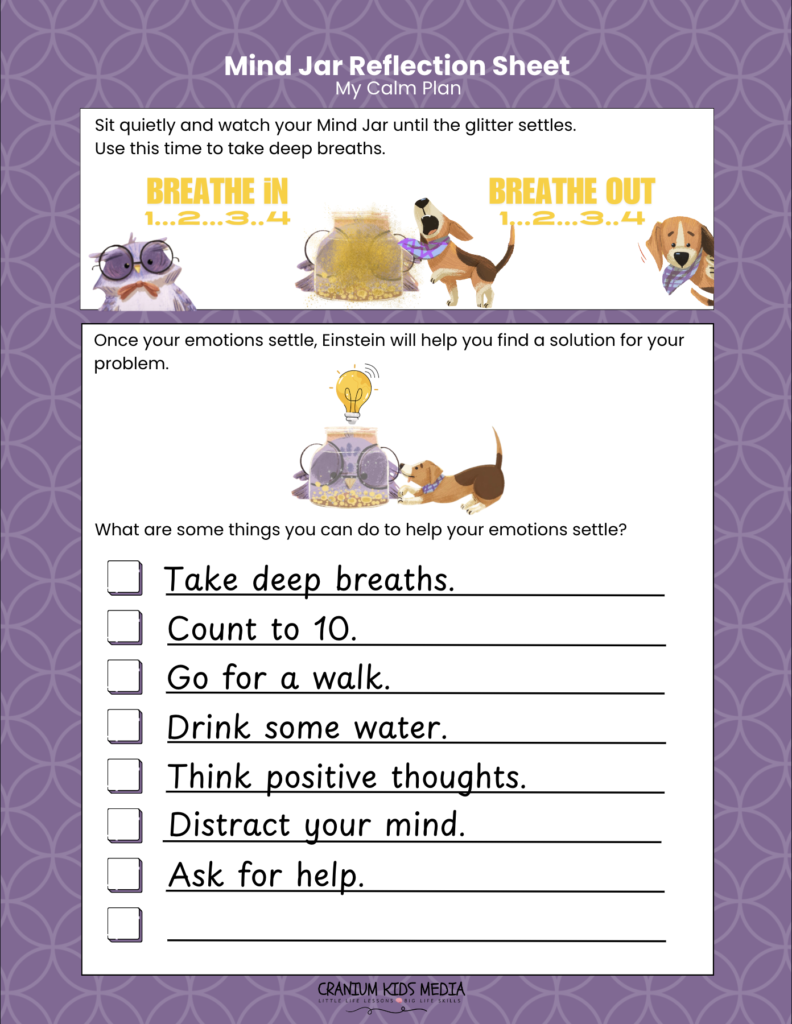Have you ever noticed how children’s emotions can take over in a flash? Maybe you’ve seen a student’s frustration boil over during a tricky math problem or their anxiety spike when the unexpected happens. When this happens, unproductive words and actions can follow and even spiral out of control. As adults, we know that emotions can cloud our thinking and make even the simplest tasks and changes feel overwhelming. But how do we teach children this essential lesson in a way they can understand?
One simple, effective tool I love using is the Mind Jar. At first glance, it might look like just another toy—a jar filled with water and glitter. When paired with two special Cranium Critters, this little jar holds the key to a powerful lesson about our brains, our emotions, and how we can regain control when our feelings get stirred up.
What is a Mind Jar?
A mind jar is a clear container filled with water, glitter glue, and glitter. When the jar is still, the glitter settles at the bottom, just like a calm mind where Scout (the safety pup) is relaxed, and Einstein (the wise owl) is ready to think. But when the jar is shaken, the glitter swirls around, making it hard to see through—much like what happens when Scout gets startled by big emotions and takes over, making it difficult for Einstein to think clearly.
Why Use a Mind Jar?
Teaching children about emotions can be tricky. We know that emotions can cloud judgment and affect behavior, but how do we make this idea relatable to them? With Scout and Einstein guiding the way, we use the mind jar to give children a tangible way to see how strong emotions—like anger or excitement—can swirl around in their minds and make it hard to think clearly.
Just as the glitter takes time to settle, so do emotions. When children understand this, they’re more likely to use calming strategies to help themselves think clearly, just like Einstein does after Scout has calmed down.
How to Use a Mind Jar in SEL Lessons
- Introduce Scout and Einstein: Start by introducing Scout and Einstein to the children. Explain that Scout lives in the amygdala, where she watches over our emotions and keeps us safe. Meanwhile, Einstein works in the prefrontal cortex, helping us think, solve problems, and make good choices.
- Demonstrate with the Mind Jar: Show the mind jar when it is clear and settled. Explain that this is like when Scout is calm and Einstein is able to do his best thinking. Then, shake the jar to make the glitter swirl. Ask the children what they notice. Explain that the swirling glitter represents big emotions—like worry or frustration—that can take over Scout’s control center and make it hard for Einstein to think clearly.
- Talk About Emotional Contagion: Explain that when Scout in one person’s brain starts barking, it can make other Scouts in the room bark, too! This is called emotional contagion. When everyone is feeling stirred up, Einstein can’t do his job well. Two or more mind jars can be used to show what it looks like when everyone’s Scout is barking.
- Encourage Reflection with Scout and Einstein: Use a Mind Jar Reflection Sheet that includes images of Scout and Einstein. Ask the students to reflect on a time when their minds felt “cloudy” like the glitter in the jar. How did Scout react? Was Einstein able to help? What strategies could they use to calm Scout and let Einstein think clearly?
- Practice Calming Techniques: Teach students calming strategies, like deep breathing or “Paw Print Breathing,” while using the mind jar. As they watch the glitter settle, they can imagine Scout settling down and letting Einstein take charge again.
- Reinforce with Scout and Einstein: Use Scout and Einstein to narrate different situations throughout the week where the mind jar can help. Have the characters remind students to pause, breathe, and wait for their minds to clear, just like waiting for the glitter to settle.
Little Life Lessons 🧠 BIG Life Skills
By using the mind jar, children learn how emotions like excitement, anger, or fear can cloud their thinking, much like how Scout can get worked up and make it hard for Einstein to be heard. The mind jar, along with our Cranium Critters, helps them see that emotions are normal and gives them the tools to calm down, so Einstein can help them make good choices. Check out Cranium Critters: Paws at the Pause Place to learn more about the roles of Scout and Einstein.
Ready to Shake Things Up? Visit our Teachers Pay Teachers page to download a full lesson plan and bring Scout, Einstein, and the mind jar to your classroom or home. When you turn toys into tools, you’re giving children life skills that last!
FREE Mind Jar Reflection Sheet -
Click on the image to download from Google Drive
Watch this Lesson on YouTube
Scout & Einstein teach
How to Make a Mind Jar!




